First of all, I'm excited that you're here and interested in growing your own almonds. Walnut and Hickory trees do well in the colder climates of zone 4, 5, and 6. But almonds haven't really been an option in the Midwest or Northeast until recently.
Javid's Iranian almond is a cold hardy almond tree that has been successfully growing in zones 5 and 6, with trials looking promising for zone 4 (although they might need some winter protection in zone 4).
The trees bloom late, which prevents frost damage to blossoms - and they are also self fertile. These almonds are worth the effort, with their amaretto-like flavor unmatched to anything you can buy at the store.
Jump to:
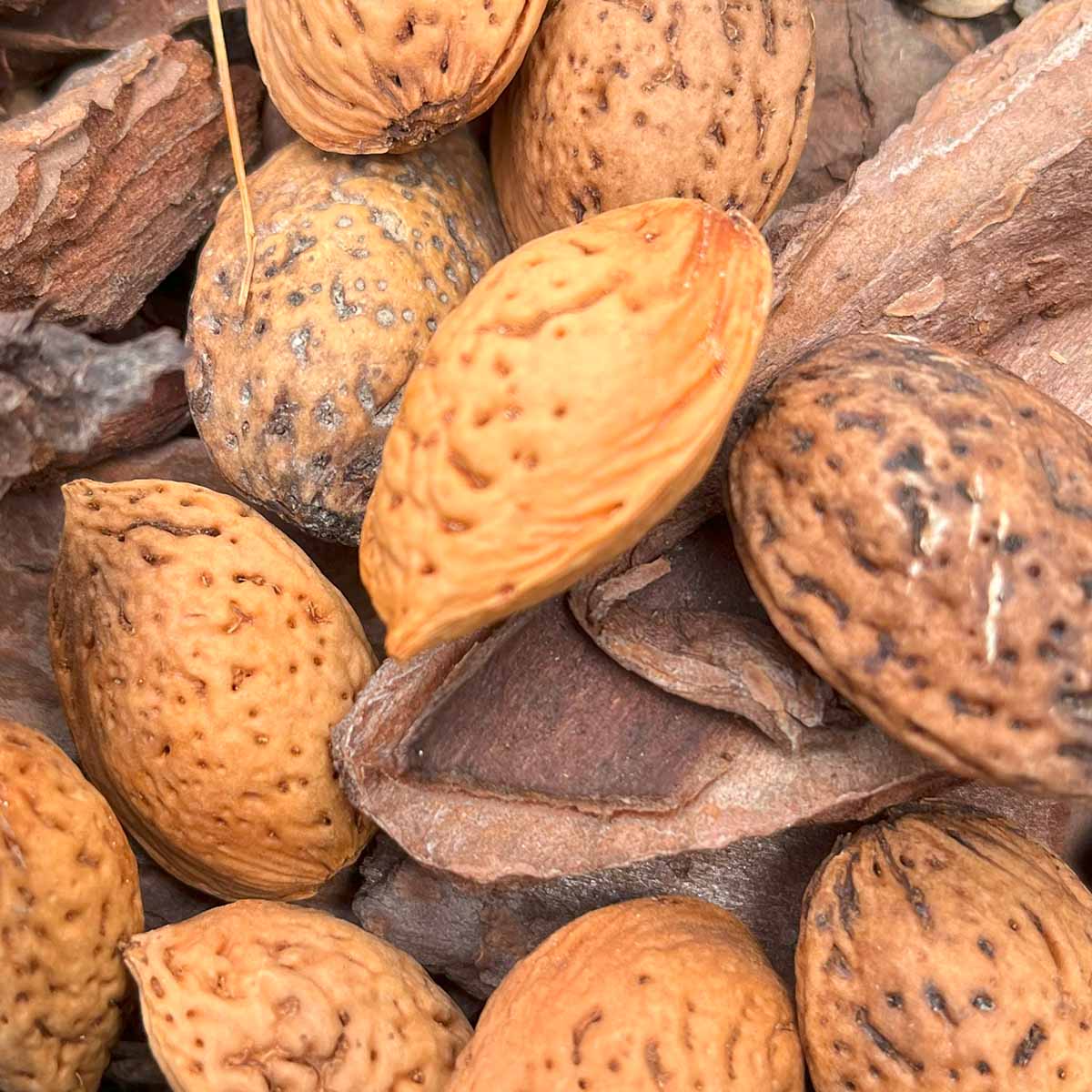
Almond flavor
Have you ever tasted a home grown almond, or almonds when traveling abroad? I hadn’t until recently on a farm stay in Italy where an old almond tree stood just outside the front door (sadly, I don't know the variety). We were encouraged to grab almonds, a nearby rock, and crack them open on the stone pedestal sitting beneath the tree.
As I cracked open my first almond, I tried desperately to identify the strong, familiar flavor. This didn’t taste like an almond at all… it tasted like… almond extract! I was shocked. When I returned home, I immediately researched almonds so I could plant my own tree.
It turns out, almonds from California (99.99% of our supply in the US) must be pasteurized from a rule established in 2007. California’s main almond growing region had salmonella in the soil, and almonds were picking it up and causing outbreaks. So pasteurization was required and farmers could choose to steam them or treat them with some chemicals.
Since I was living in California at the time, I could pick out almost any almond tree to grow in the mild climate. So I planted a variety that sounds great and then moved a couple years later to the Midwest - before the tree was old enough to produce the almonds. I was devastated.
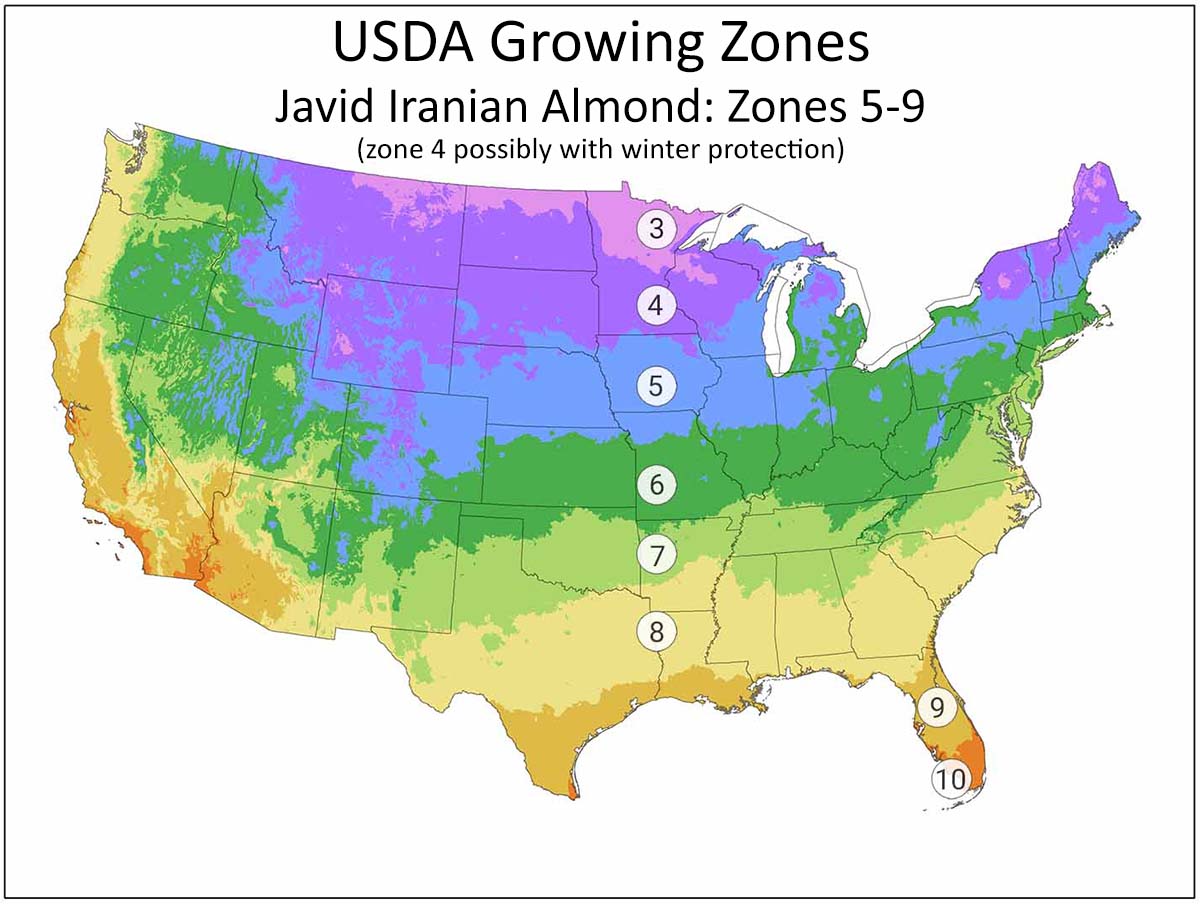
Searching for a cold hardy almond tree
My relocation to Illinois ignited a determination to grow my own almond tree, something that isn’t supposed to grow in the Chicago climate zone of 5a/6b. I searched every corner of the internet, even Reddit didn’t have anything on growing almonds in Zone 5 or colder. Finally, I stumbled on a single forum post talking about Javid’s Iranian Almond.
I spent an embarrassing amount of time researching this tree and tracking down a source. I made countless phone calls to University researchers, cold called nurseries to ask if they have one or know where to get one. No one seemed to have heard of this tree. Surprisingly, I found a source in Canada, but they didn’t ship to the US.
And then finally, in February of 2023, I found a source: Brambleberry Farm in Indiana. I visited the farm and talked with Darren (the owner) about the tree. The story goes something like this:
Cliff England, a farmer and nurseryman in Kentucky, was telling his friend Javid how he wished he could grow almonds but it was just too cold where he lived. Javid mentioned that his family home in the cold Iranian mountains had a lot of almond trees growing perfectly well.
Next time Javid visited Iran, he grabbed some cuttings and brought them to Cliff to graft onto some rootstock. Cliff grew the trees and once they started producing almonds, he brought them to friends’ houses to share.
Darren is one of those friends. He was amazed at the amaretto-like flavor. Since Darren runs a local nursery, he asked Cliff if he could get some cuttings to sell the trees to the public. Cliff actually used to sell some of the trees as well, since he also runs a nursery. However, Cliff's main focus is paw paw, persimmon, and jujube trees, and keeping special rootstock around for grafting the almonds was more than he wanted to do (so he no longer sells them at his nursery, Cliff's England).
Darren sells the Javid's Iranian almond trees at his farm in Indiana, Brambleberry Farm. He doesn't ship them, so they are for pickup only. Of course I couldn't pass up the opportunity to finally get an almond tree. I drove 5 hours to the farm in Paoli, stopped at great little restaurant with farm fresh ingredients (Burton's Farmhouse), chatted with Darren at Brambleberry farm for a while, then drove 5 hours home.
Darren grafted the Javid scions onto two different rootstocks, so I had a choice. Based on my soil and location, he suggested the Krymsk-86 rootstock, which performs well even in heavy clay soils (which I have).
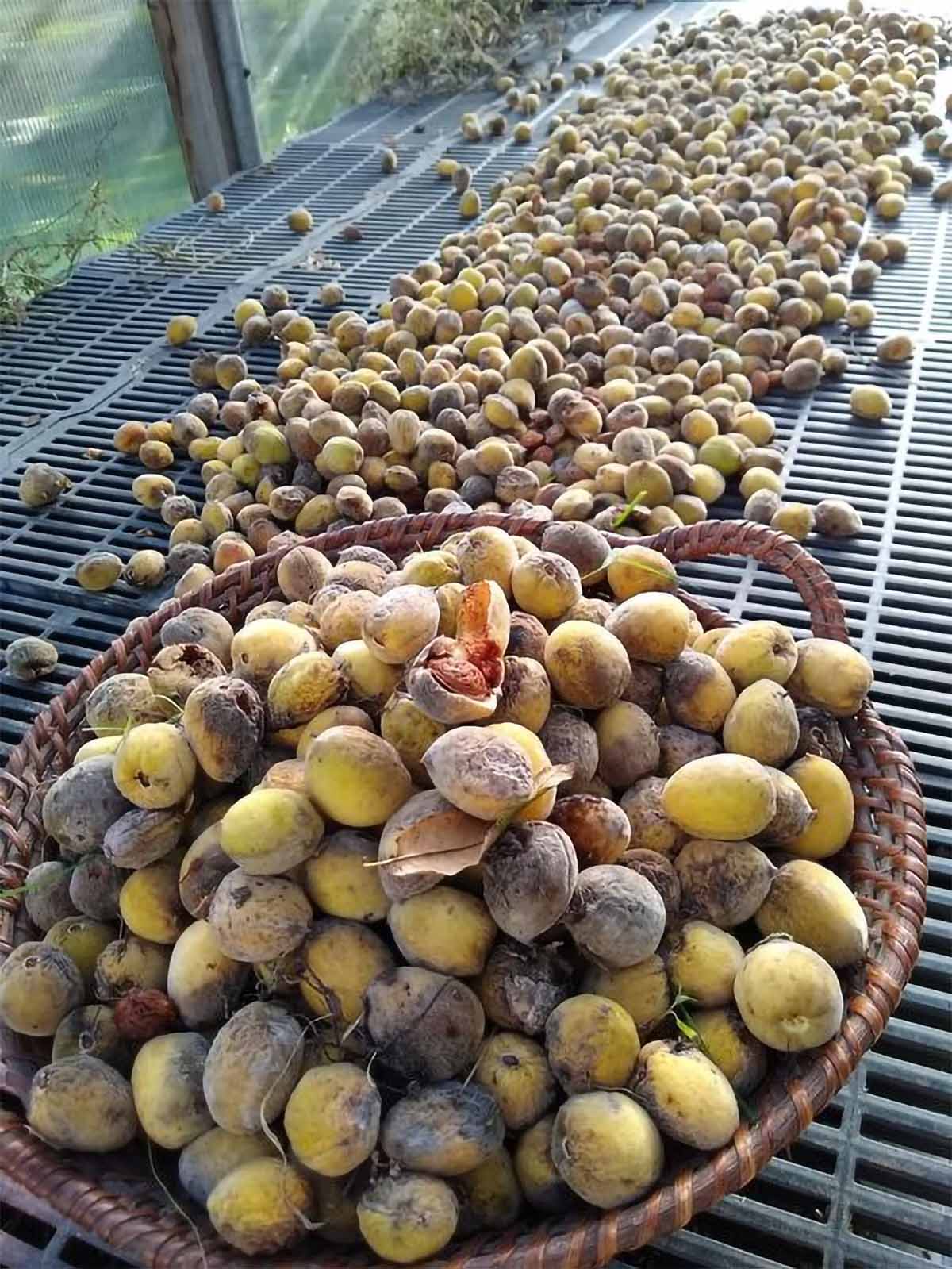
About Javid's Iranian almond
What makes Javid's Iranian almond special? Quite a few things, actually. When I asked Darren from Brambleberry Farm this question, he said, "The two most noteworthy features of this tree are kernels with strong amaretto flavor and its ability to thrive and produce in humid summers where most almonds succumb to many fungal diseases."
Growing zones: 5a (possibly zone 4)
Firstly, it can grow in colder climates than other almonds are able to, as far north as zone 5, or 5a, and possibly zone 4 with some winter protection. Perfect Circle farm in Vermont is trialing it in USDA zone 4b and Whiffletree Farm & Nursery in Ontario, Canada has been trialing this as well.
With some early testing, Whiffletree farm sings the praises for Javid's Iranian Almond tree: "When we acquired this potential celebrity, we had some questions. Can the trees survive our winters? Will the nuts ripen here? Will the flavour be as great as it is 'cracked up' to be? In our own experience, with trees fruiting at several local sites, our answer is a definite yes on all three counts."
This means almonds can grow in many Midwest states like Illinois, Indiana, Wisconsin, and Michigan. It also grows well in the Northeast, including Maine, Vermont, Massachusetts, New Hampshire, even parts of New York, just to name a few. There are even a few areas that it can grow in Canada!
Late bloom & cold hardy blooms
Some people report Javid's Iranian almond as having a late bloom. This is beneficial because the flowers won't get killed off by a late frost. However, Darren at Brambleberry says his trees in Paoli, Indiana (zone 6) bloom early - at the same time as apricots.
However, he says, "Interestingly, our tree has made full crops of fruit even when peaches have been frozen out, even though it blooms very early (with apricots)!"
The tree is also self-fertile, so it doesn't require a second tree for pollination.
Produces almonds at a young age
Almond trees are in the same family as other stone fruit, like peaches and cherries. And like other stone fruit, it produces a crop relatively quickly compared to other types of fruit trees.
You can usually expect a crop within 2-3 years of planting (depending on the age of the tree when you bought it). I've had peach trees from the nursery fruit the first year!
Flavor
Javid's Iranian almonds are also very flavorful. I was able to try a few while chatting with Darren at Brambleberry Farm. They have the characteristic amaretto (or almond extract) flavor. They are incredibly delicious and unlike anything you can buy at the store.
Get ready to have fun cracking them open, too. I broke two nut crackers with these nuts! I finally wrapped them in a towel and cracked them with a hammer on my cement garage floor!
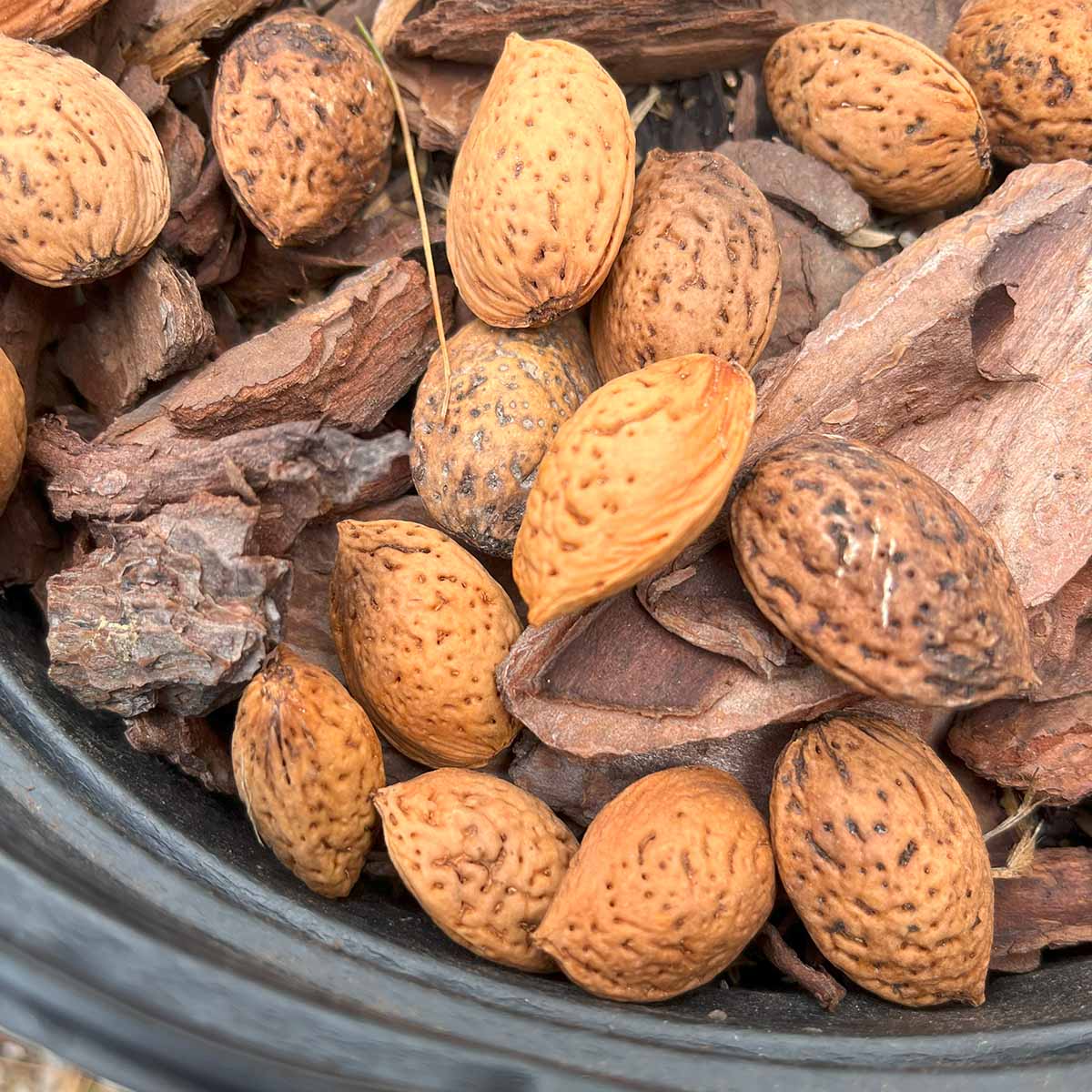
Growing my own Javid Iranian almond
I planted my Javid's Iranian almond tree in spring of 2023 and it grew like crazy. It got the royal treatment with a home in a circular raised bed (4 foot diameter, 18" tall). I also dug out the soil about 1 foot below the raised bed and laid down gopher wire.
I filled the garden bed with a mix from a local nursery that is ⅓rd top soil (very clay heavy), ⅓ compost, and ⅓ sand. It sits on the south side with full sun all summer long.
The almond tree grew from a little 16-inch dormant sapling to 4 feet tall in its first year. I kept it watered but didn't add any extra fertilizer. I planted herbs at the base to keep the soil cooler during hot days and to prevent weeds.
This spring, I'll be grafting some of my own scions onto rootstock in an experiment to see how difficult it is. I'm also a part of the Midwest Fruit Explorers team and we've procured some scion wood for a grafting workshop we host every year at the Chicago Botanic garden. I hope to get these in more backyards and to keep up with how they perform on various rootstock.
Lastly, I live in an area that is getting a 17-year and 13-year cicada emergence at the same time, so I have to protect all of my nut and fruit trees from the cicadas.

Where to buy
I've found three possible places to buy the trees:
- Brambleberry Farm in Paoli, IN (pickup only for trees, will ship scion wood for grafting)
- Perfect Circle Farm in Vermont (will ship, hard to find in-stock)
- Whiffle Tree Farm in Canada (ships to Canada only, not the US)
Brambleberry Farm
Brambleberry farm is in Paoli, Indiana and sells a limited supply in late winter / early spring. You have to pick them up and there are no preorders (It's a 10 hour round trip from the Chicago area).
The Javid Iranian almond isn't listed on the site, but they do sell them every year now. You can reach out via email, phone, or Facebook to inquire about the stock. Last year I bought mine the first day he had them available, which was March 23rd, for $34 in a 2-3 gallon container.
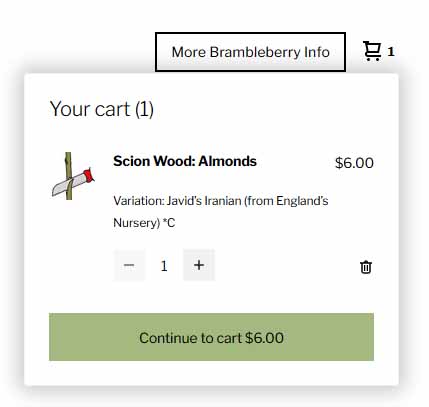
You can also buy Javid scion wood from Brambleberry Farm for grafting. Look for the almond listing on this page. It looks like a generic almond listing, but once you add it to your cart, it specifies that it's Javid's Iranian Almond. It looks like they open up sales on Feb 1st and end them in March.
Perfect Circle
You can also possibly buy them from Perfect Circle in Vermont. They sell seedlings for $40, small grafted trees for $75 and large trees for $100. I do not know what small vs large entails.
Their website says they are successfully growing them in zone 5B and are trialing them in zone 4B (I assume these zones are listed prior to the USDA updated map). Perfect Circle ships the almond trees, although the stock always said ‘sold out’ last year and I checked daily! (I contacted them but didn’t hear back).
I did come across a couple reports of people who have bought from Perfect Circle in late summer (2023) for fall planting that year.
Whiffletree Farm & Nursery
There's a nursery in Canada that seems to reliably have inventory of the Javid Iranian almond tree almost any time of the year that I've checked. Whiffletree sells them for $65, but only ship within Canada, and not to the United States (I assume for agricultural import/export rules).
You can find the almond trees on their website and add to your cart for shipping if you're in Canada.
Sweet vs Bitter almond
As consumers, we are familiar with sweet almonds. Those are the ones we buy in the store and eat on a daily basis. Bitter almonds are used mostly for flavoring extracts and shouldn't be eaten in large amounts due to a chemical found in the nut.
Brittanica explains, "Bitter almonds have amygdalin, which is present only in trace amounts in sweet almonds, and the oil of bitter almonds contains benzaldehyde and prussic (hydrocyanic) acid."
Javid's Iranian almond doesn't taste bitter, but Darren is getting it tested for amygdalin content anyway. Once those results are back from the lab, I'll let you know.
Hall's Hardy almond is another cold hardy variety, but it doesn't have a noteworthy flavor. That said, it's a peach-almond hybrid and suspected to have higher levels of amygdalin. Someone asked the Oregon extension office about this who said, "There is no doubt that the bitterness of Hall's indicates an elevated level of amygdalin," continuing with, "There are many other Hall's owners out there asking the same question. No reports of poisoning were found so hopefully that is a good sign!"
If you are concerned, you can boil or roast the almonds since heat breaks down amygdalin.
Raintree Nursery answered a question about eating raw bitter almonds on their Hall's Hardy almond page as well. They responded with, "In limited quanities they can be eaten raw. Bitter almonds, and bitter almond hybrids like this, can be toxic and should be limited to 30 kernals or less if eaten raw."
Midwest Fruit Explorers
I'm one of the officers of the Midwest Fruit Explorers, a non-profit organization for people who grow fruit trees in their backyard. We are especially enthusiastic about the best tasting and unique varieties of fruits and nuts. I've introduced Javid's Iranian almond to the group and my hope is to get a bunch of these growing around the Chicago area and report back on how they perform.
If you are interested in joining the group, it's mostly centered around the Chicago area but we have members in Wisconsin and Michigan as well. It's a fantastic resource with annual pruning and grafting workshops, as well as orchard tours, harvest fests, picnics, and an apple cider press event on a perfect fall day.
More garden guides
Check out my in-depth garden guides that I publish as I meticulously grow and test various fruits and vegetables here in the Midwest.

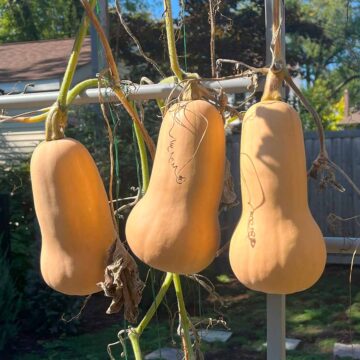
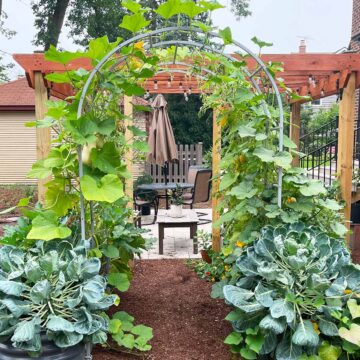
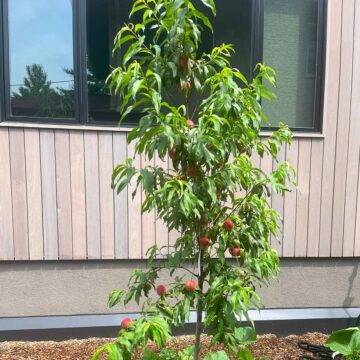
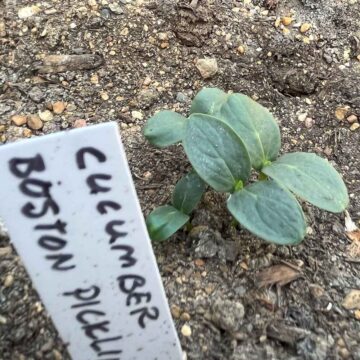
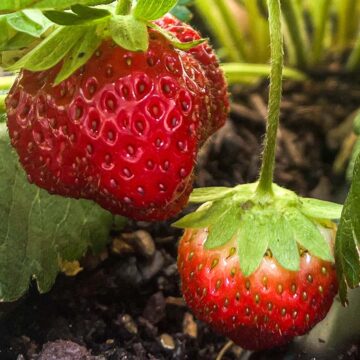
Jenna says
Did you end up getting the test for amygdalin content? If so, what were the results?
Veronica T says
Not yet! I'll follow up with the nursery again toward the end of summer - I know he said it's quite a process. Want me to contact you directly when I find out?